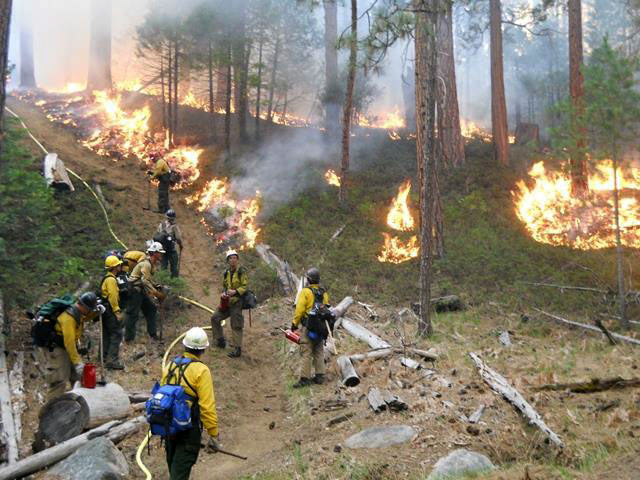The primary objective of the prescribed fire was to reduce hazardous fuels within the mixed conifer forest adjacent to the Wildland Urban Interface (WUI) community of Wawona. This project creates a continuous area of reduced fuel by linking together multiple previous fires and treatments including the 2007 and 2008 Wawona Northwest prescribed fires, the 2007, lightning-caused, Jack wildfire, and a series of mechanical vegetation thinning projects in the 2000s.
A secondary objective is ecosystem restoration. Applying fire under prescribed conditions mimics the frequent, low intensity lightning caused fires that occurred in Sierra prior to the exclusion of fire which began over 100 years ago under aggressive fire suppression policies. Historically, natural fire burned an average of 16,000 acres annually in Yosemite and played an integral role in shaping Yosemite's ecosystems. In the absence of frequent fire, unnatural levels of forest biomass have accumulated which has put many of Yosemite's values at risk, including neighboring communities, and natural and cultural features. As climate changes, these values become increasingly vulnerable to catastrophic wildfire.
Smoke will be present during the mop-up activities particularly during late evening and early morning hours. Smoky conditions will diminish each day as the fire area cools. Fire managers will continue working with the Mariposa County Air Pollution District (MCAPCD). A burn permit was issued to the park by MCAPCD prior to the start of ignitions. Smoke monitoring equipment was installed within the community and will continue to be monitored. Community members who are sensitive to smoke may want to close their windows and doors during the evening hours in order to reduce their exposure.
The photo depicts fire crews from Whiskeytown National Recreation Area, Point Reyes National Seashore, Sierra National Forest, North Lake Tahoe, and Yosemite National Park.

